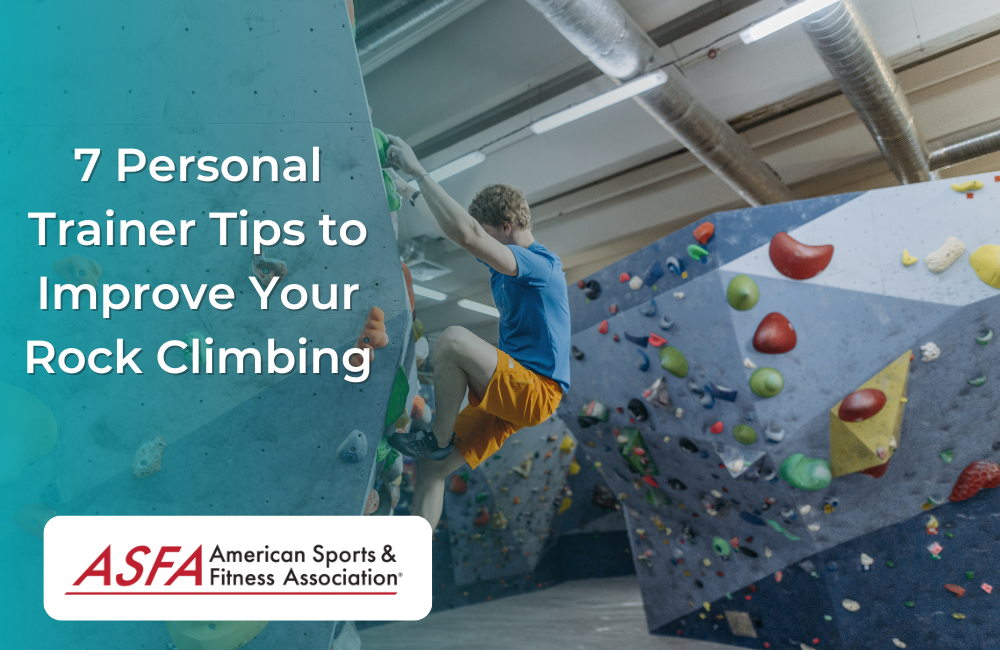Rock climbing is a great activity if you're looking for a way to get fit and have fun. But, as with any sport or exercise regime, you'll need to be careful about how much you train and the form you use while rock climbing. For those who are new to the world of rock climbing, here are seven tips that will help you get started:
Practice Proper Form
Proper form is essential to your safety and success as a rock climber. The quality of your climbing depends on how well you maintain good form. If you want to get better at rock climbing, it's important that you practice proper technique so that it becomes second nature.
The following are some tips for how to practice proper form:
● Use a Spotter - If possible, find someone who knows how to spot properly and ask them if they would be willing to help with this exercise by spotting for you while you practice on real rocks or artificial walls (if available). This will allow them to take control of the rope in case something goes wrong during the climb so that no one falls off the wall or into another person below them! It also gives them more control over the speed at which each climber moves up through each stage of their climb cycle so that everyone stays safe while having fun!
Get a Training Plan
As a personal trainer, I have seen many clients significantly improve their climbing abilities by following a training plan. A training plan will help you stay motivated, avoid injuries, and improve your technique. If you don't have access to a professional trainer, plenty of resources online can help you create your own workout routine for rock climbing.
Go to the Gym
A gym is a great place to start if you want to improve your rock climbing technique, as it has all the equipment and routes needed for training. Gyms are also ideal for meeting other climbers who can advise you on improving your skills.
Use the Right Gear
● Shoes
● Harness
● Rope
● Carabiners (the metal clips that connect your harness to the rope)
The right gear makes all the difference in how you feel on the rock and how safe you are. If your shoes don't fit or are too worn out, it'll be hard for you to grip onto rocks while climbing them. Your harness should be comfortable enough not to restrict movement but tight enough to not fall off during climbs or falls. The rope should be strong enough so that if someone falls on it, they won't break through its fibers--and if someone does fall, their weight is distributed evenly across their entire body instead of just one point at which they can get injured by falling into sharp rocks below them (like when water skiing).
Warm Up and Cool Down
Warming up and cooling down are essential to any workout, but they're especially important when rock climbing. A good warm-up will prepare your muscles for the rigors of climbing and help prevent injuries, while a cool-down helps reduce muscle soreness after a strenuous session.
The most basic form of warm-up is just walking around on flat ground or an incline until you feel loose and relaxed in your joints--this will help get blood flowing through your body so that when you start moving around more vigorously (i.e., climbing), there won't be any lactic acid buildup in areas like the forearms or calves which could cause cramping later on in an ascent.
Another option is dynamic stretching: performing movements similar to those used during climbing with low resistance until further into the climb, where resistance increases proportionally with intensity levels being reached by each climber within their own abilities as well as equipment used such as ropes & harnesses etc.
Don't Train Too Much
As a personal trainer, I often see clients who are over-training. This can lead to injury and set you back in your climbing goals.
To know if you are over-training, ask yourself these questions:
● How many days per week do I climb?
● How many hours per day do I climb?
If your answers are more than 4 days/week or 8 hours/day, then it's likely that you're over-training! There is no exact number of days or hours that defines "too much" because everyone's body responds differently, but generally speaking, if any of these numbers are higher than what is recommended by rock climbing experts (usually 4 days/week), then chances are good that something needs adjusting before things get worse (and trust me when I say this). There are many factors involved, such as age, diet/nutrition habits, etc., but generally speaking, most people should be able to climb safely 5 times per week without any adverse effects on their bodies so long as they take breaks between sessions so their muscles don't become fatigued from excessive use throughout each week's worth of training sessions.
Eat Right
● Eat a balanced diet.
● Eat before you work out.
● Eat protein to build muscle.
● Eat fruits and vegetables for vitamins and minerals, but don't overdo it on the carbs!
● Avoid junk food at all costs!
The two most important things to remember when creating a training plan are that it should be specific to your goals and tailored to your current fitness level. For example, if you want to improve your strength and endurance, you'll need to focus on these areas as part of your routine breakfast like a king, lunch like a prince, and dinner like a pauper. Eat more vegetables and fruits than protein foods. -Eat whole grains for fiber and B vitamins. -Eat lean meats for iron, zinc, and B12.
Rock climbing is a great activity that anyone can enjoy, but it requires constant attention to proper form, a good training plan, and some basic equipment.
Rock climbing is also a great way for people of all ages to get fit and stay healthy. Rock climbing is one of the most popular activities in the world today because it has many benefits, like being fun, challenging, and exciting. It provides an opportunity for people from all walks of life, including children, teenagers, or adults, who want something new to try out with their friends or family members so they can spend quality time together outside enjoying nature at its best!
Conclusion
Rock climbing is a great activity that anyone can enjoy, but it requires constant attention to proper form, a good training plan, and some basic equipment. These tips will help you get started on your journey toward becoming an expert climber!





